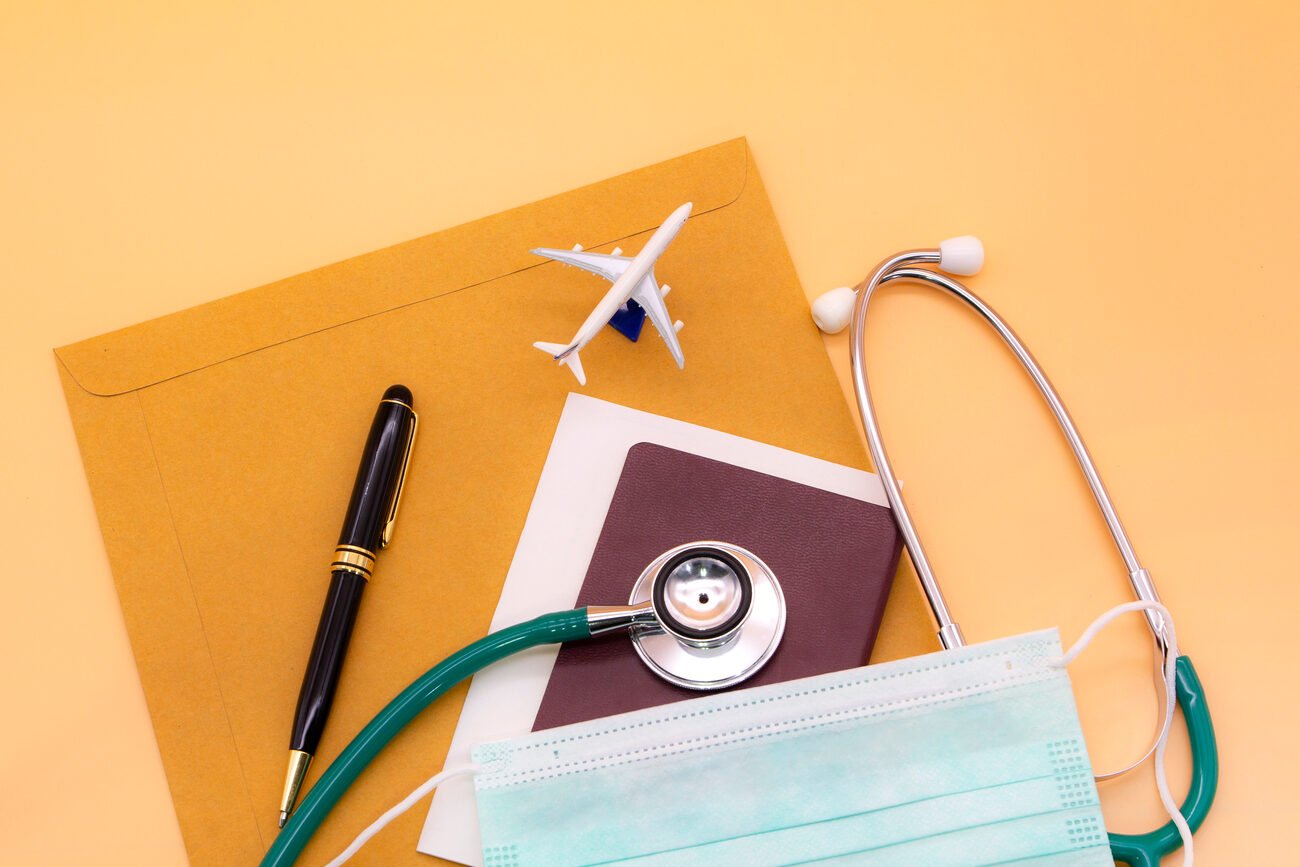We’ve seen our share of food allergy portrayals, from seafood to nuts, on sitcoms and rom-coms. And while they’re usually posited as laugh track fodder, in real life, food allergies are no joke. They can be a matter of life and death, which is why it’s so important to know the difference between a sensitivity and an allergy and how to protect your loved ones or others from life-threatening reactions.
But we don’t expect you to take just our word for it. We Ask a Pro some of the most common questions about traveling with and with awareness of food allergies – in this case, Dr. Gill Hart, PhD, Scientific Director of YorkTest Laboratories, an expert organization specializing in food allergy and sensitivity testing at home. Here’s what she has to say.
How can one tell the difference between a food allergy, a sensitivity, a reaction, and food poisoning?
This is a really important distinguishment, as those with food allergies should never downplay this vulnerability and those with preferences or slight sensitivity should never, ever call it an allergy, as that puts the people with actual allergies at risk of not being taken seriously. However, if you have an adverse reaction to food, the trauma of experiencing it may blur the lines.
According to Dr. Hart, “A food allergy is a severe reaction that can occur within minutes of eating the food. Allergy symptoms include tingling lips, mouth swelling, vomiting, rashes, and reactions that can be life-threatening or fatal.” An important distinguishing point: “Medical intervention is required,” she says.
Food poisoning has a slightly more delayed reaction since it’s caused by bacteria entering the body, which can take some time to be processed. “Food poisoning usually results in sickness and/or diarrhea after a few hours or up to a day after eating the food.” If you got sick immediately, it’s not food poisoning.
Food sensitivity is even harder to catch with a longer delay. “Food sensitivity reactions are different and take on different forms. They can take hours or days to show up and tend to cause chronic ongoing symptoms such as IBS, migraines, low energy, low mood, skin problems and joint pain,” she explains.
What are the most common food allergies suffered by American travelers?
In the doctor’s experience, “The most common food allergies that face American travelers are shellfish, peanuts, and tree nuts,” which include almonds, cashews, and even hazelnuts, all of which are commonly used in other products and many recipes. Peanuts are a legume that’s found in a lot of tropical cuisine, and shellfish, such as clams, scallops, lobster, crab, and shrimp, are often gourmet ingredient people look forward to dining on when on vacation, making them challenging to avoid.
“Sesame is also a rising food allergy,” Dr. Hart tells us, and is commonly used not only to top baked goods like bread but is also an important component of great hummus.
“People can also be allergic to foods such as milk, eggs, soy, and fish,” she concludes for her list of common triggers.
A lot of resort brands have increased their awareness of food allergies and cross-contamination. Why is this an important trend?
“This training is vital for those suffering from food allergies,” Dr. Hart emphasizes. “The ingredients that go into the food they eat can literally be the difference between life and death.
“For those with intolerances or sensitivities, although the impact isn’t life-threatening, the impact of eating trigger food on daily life is massive,” as the effects can affect the remainder of their trip and make it impossible to enjoy their vacation. Resort brands like Palladium Hotels & Resorts, Zoëtry Resorts and Spas, part of the Hyatt Inclusive Collection, Gourmet-Inclusive Karisma Hotel & Spa Resorts, and many others in Mexico and the Caribbean have put a lot of work and mindfulness into programs that educate their staff on the importance of food allergy awareness and how to protect against cross-contamination, all the better to serve their diverse visitors and their needs. This includes wait staff that will often ask about allergies as soon as you sit down, menus that are clearly marked with common allergen alerts, and signage that is clearly displayed at buffets.
What can vacationers do to ensure the safety of their fellow travelers, such as at buffets?
“With increasing awareness of food allergies and intolerances, it’s important that consumers are aware of the impact that eating ‘the wrong food’ can have on their fellow travelers,” Dr. Hart says. Being cognizant of this is part of what it means to #alwaystravelkind, an ethos that is very important to us at ALG Vacations®.
“Cross-contamination between dishes must be avoided. Dishes containing allergens such as gluten, nuts, milk, eggs, and sesame must be segregated,” she tells us. The best thing you can do as a buffet customer to ensure no emergencies disrupt your dining experience is to make sure to use designated serving ware for the dish it’s placed in or next to … and nothing else. While it may be tempting to grab an extra spoon to dig into an in-demand tray, you could be risking someone’s life by doing so.
What are some tips you can share for traveling with a food allergy?
“Always carry two adrenaline autoinjector pens, and don’t forget them when you go out,” Dr. Hart advises. If you’re traveling with someone else, like a child, friend, parent, or grandparent with an allergy, act as their safety net and check that they have their pens on them and/or any medication.
Speaking up is also incredibly important. “Always tell the people you’re going out with that you have allergies and what your problem foods are, and wear a medical bracelet that says what your allergies are,” she says. This way, your companions can be on the alert for symptoms or collapse, as well as act as another set of eyes or an advocate if the person with allergies is uncomfortable informing the staff themselves.
Finally, “Always have at hand an emergency care number in case an allergic reaction occurs and becomes a medical emergency,” she says.
Why is it important to get tested for food allergies and sensitivities?
Well, it’s better than guessing and not knowing, or worst-case, finding out the hard way! Dr. Hart says, “Food sensitivities … aren’t life threatening and can be readily tested for at home, for example by YorkTest. These tests act as a starting point for an elimination diet rather than second guessing what the trigger foods might be. The test analyzes reactions to 200 food and drink ingredients, on average people with high reactivity react to 5-6 foods. Testing takes out the guesswork.
“But it’s important that if you think that you have an allergy then you are followed up by a healthcare practitioner and/or allergy specialist. Tests such as blood tests, skin prick tests and oral challenge tests may be carried out to determine what you are allergic to.”
Knowing this may just save your life and keep you safely adventuring both geographically and gastronomically.
We all know how important it is to Plan with a Pro when it comes to travel. After all, Travel Advisors Get You There. But equally important is making sure advisor pros are supported and surrounded by pros themselves, particularly when it comes to topics peripheral to travel. That’s where TravelBlogue comes in as we Ask a Pro on your behalf to provide you with tips and advice from fitness, health, nutrition, mental health, beauty, wellness, and travel gear experts from around the world … and put it all at advisor fingertips.







